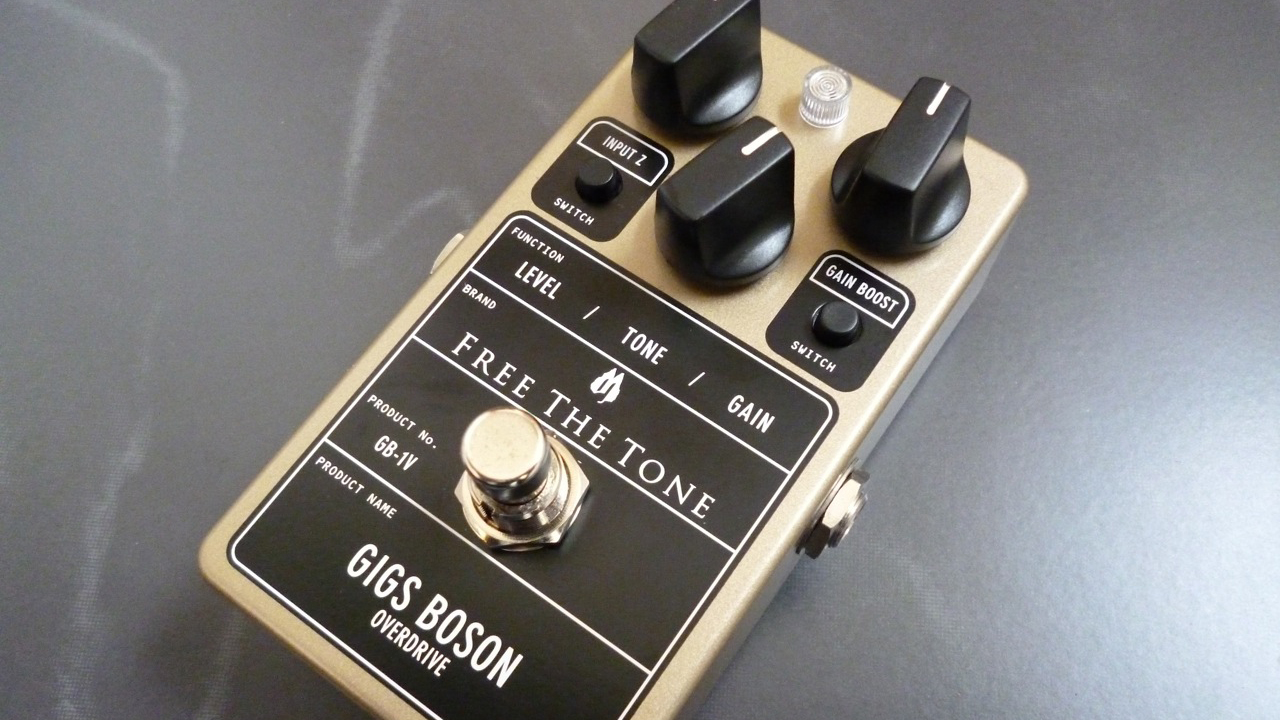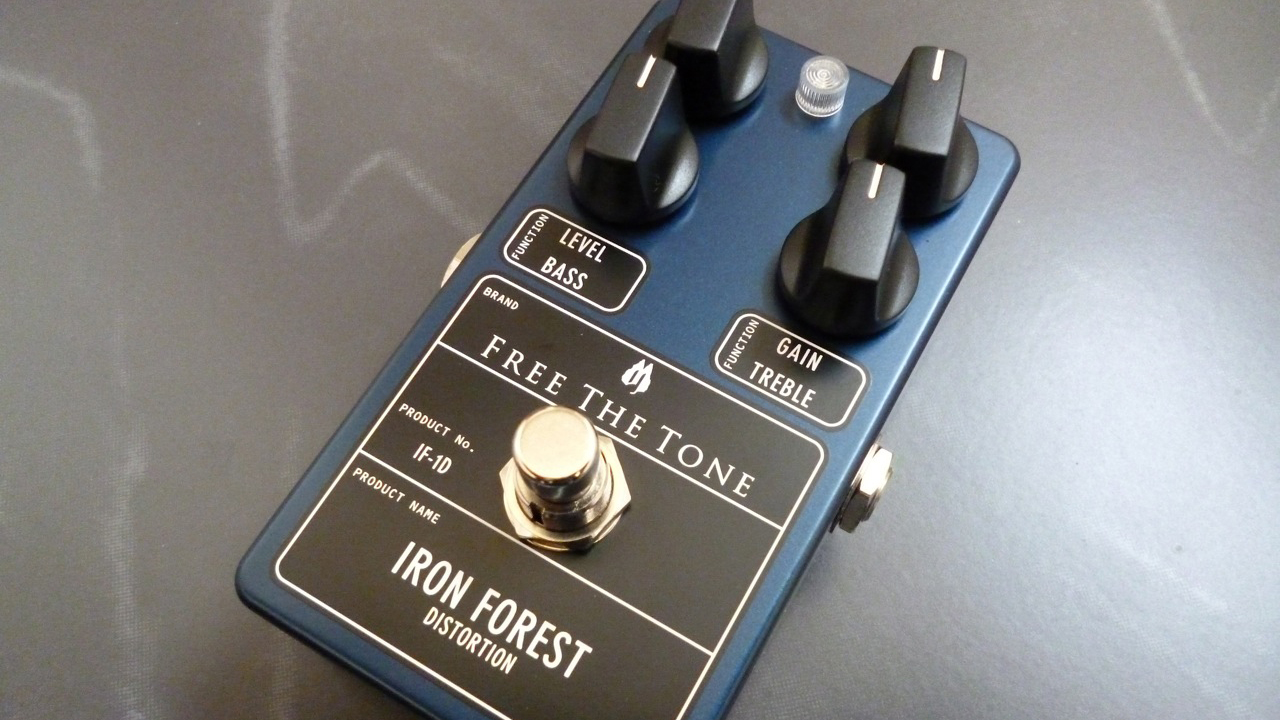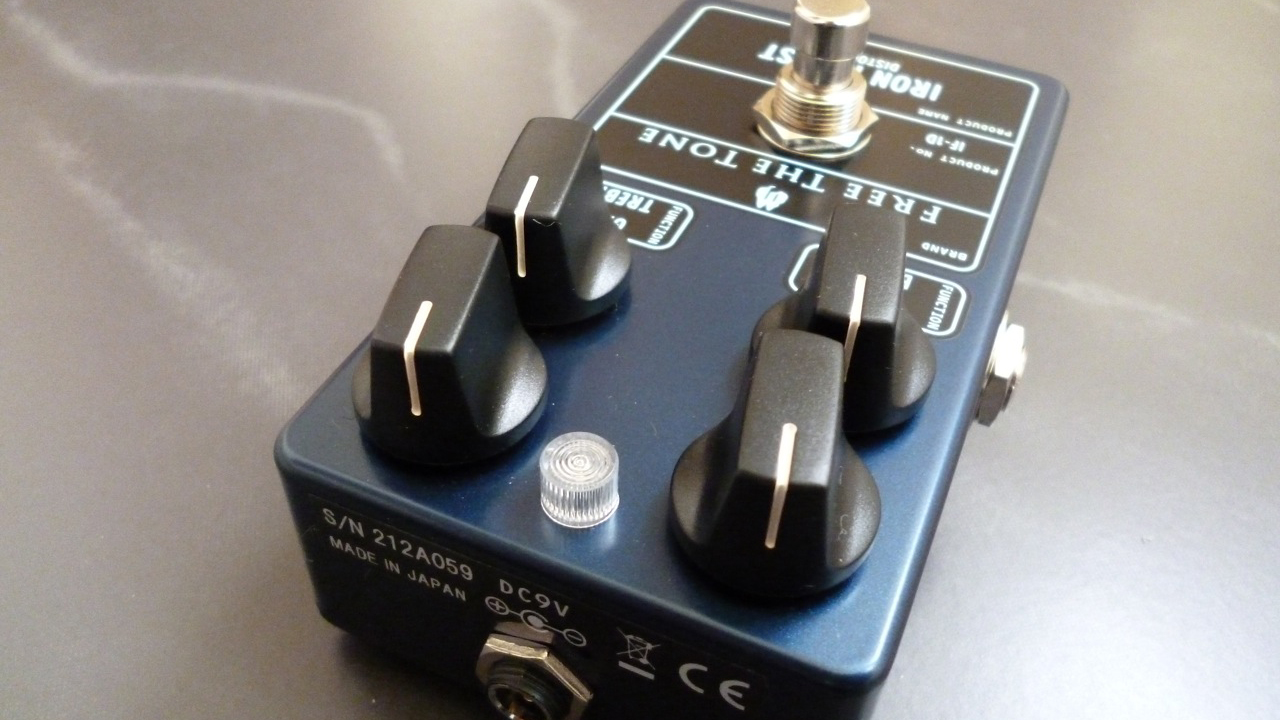Hands on with the Free The Tone Gigs Boson Overdrive and Iron Forest Distortion pedals
Two new drive pedals that look great and sound rich in tone.

Free The Tone Gigs Boson

Free The Tone Gigs Boson

Free The Tone Iron Forest

Free The Tone Iron Forest
Since becoming an independent company in 2011, Free The Tone has been busy making effects pedals, cables and routing controllers under the direction of owner, Yuki Hayashi.
The first releases were high end pedals like the SOV-2 Overdrive and Quad Arrow Distortion QA-2 but they've now released two pedals that feature advanced technology at lower prices. We took a look at both and found much to like!
Looking at the Gigs Boson Overdrive GB-1V you can't help but admire it's quiet sophistication - the black rotary dials and main panel married to the matte silver/gold coloured metal casing simply exudes class. Named after the Higgs Boson particle discovered in 2012, it's not just the exterior that appeals - the pedal features a newly developed input circuitry called the HTS circuit (HTS = Holistic Tonal Solution) that prevents signal degradation even when bypassed. It consists of three separate circuits (input, noiseless on/off and output driver) that keeps the guitar's signal pure, stable and with a very low signal to noise ratio. Bottomline, all this is to provide the user with the same sound quality regardless of being on or off (ie no dullness or extraneous noise added) and the benefit of silent on/off switching (no switch clicking).
At the top of the pedal are three rotary dials (level/tone/gain) which effect your choice of tones while underneath the first and last dials are small switches which offer input switch choices and a gain boost. While all this seems quite straightforward, the input switch is intriguing - it allows the user to choose between impedances of 1MΩ or 100kΩ . either of which is in use regardless of the effect being on/off. 1MΩ is normal (switch in up position) but if slight treble reduction is desired, pushing the switch in engages the 100kΩ setting. Add to all this a broader dynamic range than usually associated with DC9V power supplies (it has a minimal 9mA draw) and a low S/N ratio, the specs are impressive. What of its sound though?
In many respects, the GB-1V caters for most tones a blues rock guitarist would wish for, from same-as if bypassed (gain at zero, tone at maximum and level at 3 o'clock) and edgy crunchy tones (gain at 9 o'clock through to 12 o'clock, tone beyond 12 o'clock to excite upper frequencies) onto more enhanced tones for impressive sustain and thick overdrive. Engaging the gain boost increases volume and saturation - you could happily use it for lead breaks although it would require a reach down to push the button. Other than modern metal tones with a hard percussive edge, this pedal will cater for all manner of classic blues and rock styles, from Robert Cray and SRV through to AC/DC and ZZ Top. At present, Japanese guitar hero, Hotei is using two on his live pedal board - recommendation indeed.

Next up is the Iron Forest Distortion IF-1D that is visually similar to the Gigs Boson except the metal case is a matt navy colour. It also features the HTS circuit for pure tones, silent on/off switching and alert when battery power falls below 6 volts (the LED gets progressively dimmer). Unlike the Gigs Boson pedal, the IF-1D features four rotary dials; level/gain/bass/treble. In some respects, the tonal options are similar to the higher priced Quad Arrow Distortion pedal (rich distortion, plenty of sustain) although it seems more hard rock/modern metal biased with a brighter tone and sharper percussive attack.
With controls at 12 o'clock and an amp set clean, the guitar tone is cuttingly precise for all manner of power chord riffing and lead work. If you're a fan of virtuosic lead techniques, there is plenty of distortion on tap (sic) to blend sweep picking and legato approaches. With gain at maximum it's an OTT thrill ride (humbuckers or single coils) with masses of sustain and intense distortion - heavy vibrato applied to string bends high up the fretboard are guaranteed to scream! Certainly, we can't think of anyone wanting more distortion than what is on offer here. If sharp and cutting rock and metal tones are your prime interests the IF-1D will deliver in full.
Get the MusicRadar Newsletter
Want all the hottest music and gear news, reviews, deals, features and more, direct to your inbox? Sign up here.
The Gigs Boson Overdrive GB-1V retails at £222 as does the Iron Forest Distortion IF-1D.
For more info visit Free The Tone.
Audio demos
The two audio demos below are the same for each pedal: three riffs played twice each time (neck single coil then bridge humbucker pickups used).
- First riff features gain at 25% (9 o'clock), treble and bass at 12 o'clock
- Second riff features gain at 50% (12 o'clock), treble and bass at 12 o'clock
- Third riff features gain at 100% (5 o'clock) with treble and bass at 12 o'clock
Gigs Boson
Iron Forest
Equipment used:
- Musicman Luke guitar with EMG S/S/H pickup configuration
- IK Multimedia's Amplitube 3 using a Fender amp emulation set to clean (ie no breakup)
- Reverb and delay courtesy of Studio One version 2


“A pedal that sings with harmonic richness and blooming touch response”: Tone King offers up boutique tube amp tones for your pedalboard with the Imperial Preamp
“Each and every unit is perfectly dialled in to the 'sweet spot' that can be so elusive to find in vintage pedals”: Pigtronix’s Gas Giant is a high-gain fuzz pedal with a FET-driven onboard noise gate









